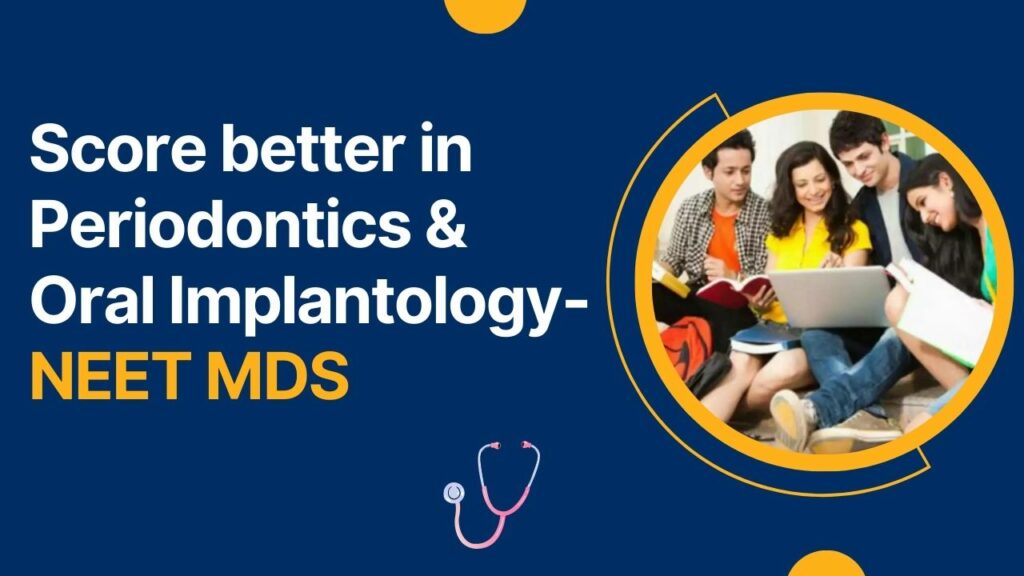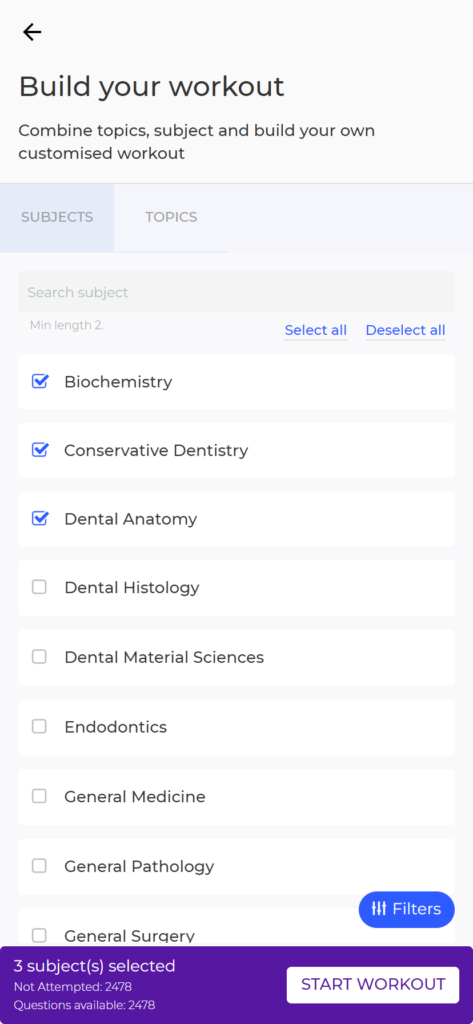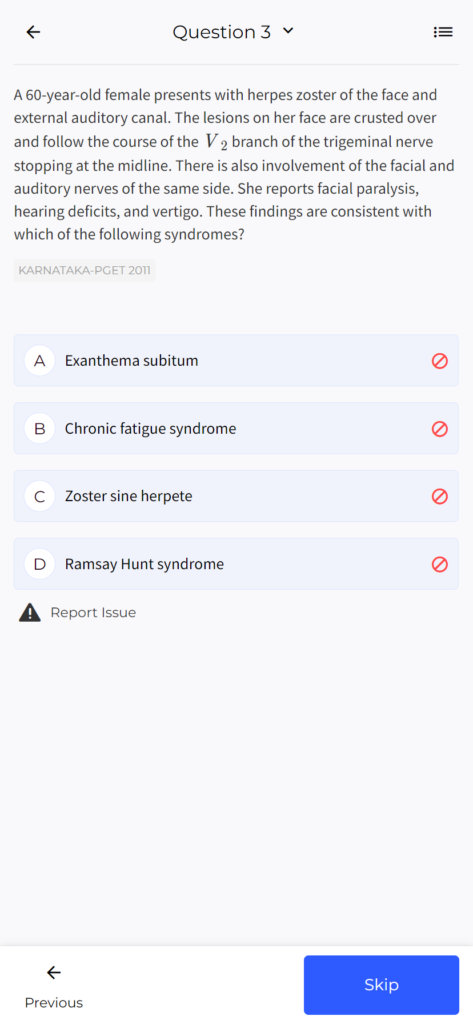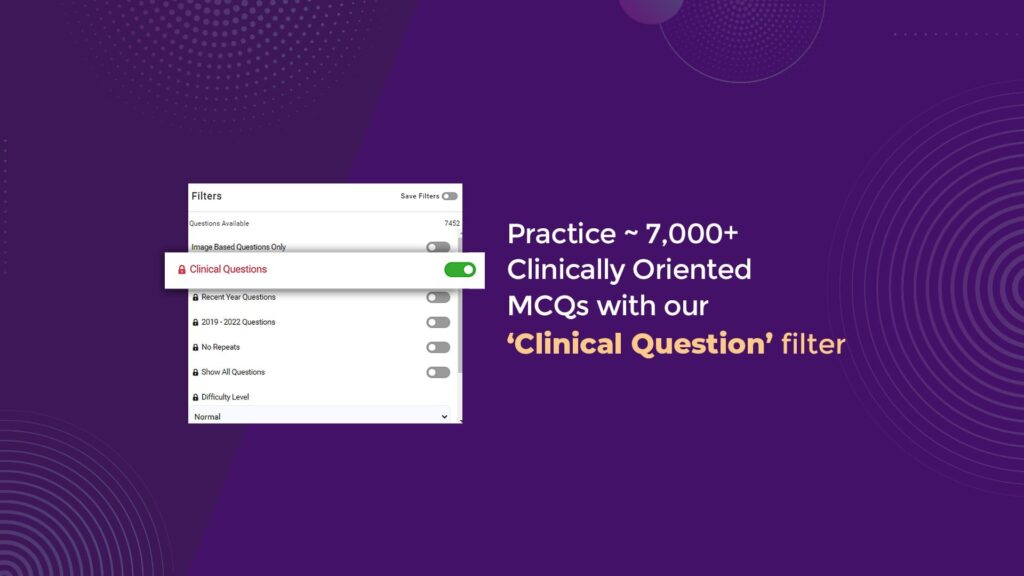Score better in Periodontics & Oral Implantology – NEET MDS

Imagine the intricate harmony of a suspension bridge, where each supporting cable and pillar plays a vital role in ensuring its strength and stability. Within the domain of dentistry, a captivating field known as periodontics and oral implantology mirrors this equilibrium by delving into the world of supporting structures of teeth and dental implants. These structures encompass not only the teeth themselves but also the delicate oral mucous membrane that envelops them. In simpler terms, periodontics is the science dedicated to comprehending the health and diseases of these pivotal structures.
On the other hand, oral implantology hones the art of restoring lost teeth using implants. Over the years, implants have become a basic part of periodontics. Just as engineers master the intricacies of construction, mastering these two topics paves the path to becoming a skilled dental professional. Aspiring dental postgraduates may feel that these two areas are expansive, but they can be conquered with the below effective strategies, ultimately resulting in a good exam score.
Be well-versed in periodontics and oral implantology
Exploring the vast terrain of the NEET MDS syllabus for periodontics and oral implantology might seem like embarking on a grand adventure. To decode this complex territory, aspirants can rely on a well-thought-out process. Begin by immersing yourself in comprehensive notes available on PULP, thoughtfully designed to simplify intricate concepts. But don’t stop at just reading – make the notes in your own words to understand the concepts better.
Post that, practice the topic-wise mock tests from periodontics and oral implants on the platform. You can do this by creating unlimited and customized practice tests in the ‘build your workout’ section. These mini-practice tests act like a map, indicating areas of mastery and those that might need a revisit.

Strengthen your understanding of oral anatomy, physiology, and pathology
Getting a solid grip on oral anatomy, physiology, and pathology is like setting up a strong base for comprehending how the mouth functions and what problems can arise. This foundation is crucial for those aiming to specialize in periodontics and oral implantology for dental MDS. By mastering these fundamentals, aspirants can better tackle issues like gum diseases, teeth stability, and implant procedures. It’s akin to having a treasure map that guides them to solve dental challenges effectively and enhance smiles, all while preparing for the NEET MDS exam.

Understand the different types of dental implants and their applications
For those aspiring to specialize in periodontics and oral implantology, grasping the various kinds of dental implants and how they’re used is like unlocking a toolbox full of solutions. It’s like knowing which instrument or tool to pick for a specific job. Understanding these implants helps dentists to know when and how to replace missing teeth effectively.
To make learning even more engaging and effective, it is advised to practice clinical questions with the aid of advanced workout filters on PULP. While practicing these MCQs, correlate them with real-life scenarios. This approach would assist them to figure out different implant-related problems confidently and excel in their dental PG exam as well as on the field.

Explore multidisciplinary treatment approaches
In NEET MDS, candidates can boost skills by merging dental expertise with insights from diverse fields like radiology. This synergy proves particularly advantageous in periodontics and oral implantology. For instance, incorporating radiological knowledge can aid in precise implant placement, minimizing risks and maximizing success rates. This integrative approach empowers NEET MDS aspirants to sculpt holistic solutions for intricate dental scenarios, leading to improved patient care and setting them apart as adept specialists.
Step by step
As we are aware, periodontics and oral implantology have a vast syllabus and cannot be completed in just 2-3 days. Hence, to have a firm hold on the chapters, it’s important to keep practicing the MCQs so that you’re well-prepared and cover every important aspect. BDS graduates can follow these simple rules after every mock test to improve their scores and fill all the knowledge gaps –
- Analyze incorrect answers and time-consuming questions.
- Using PrepDNA to identify topics where more attention is needed.
- Revisit these targeted portions through revision to solidify the comprehension and accuracy.
It’s like assembling a puzzle – recognizing the missing pieces, finding where they fit, and eventually completing the picture of improved performance and knowledge.

——————
Preparing for periodontics and oral implantology during NEET MDS preparation is a journey that demands a blend of focused study, hands-on experience, and unwavering dedication. Instead of leaving it to the eleventh hour, aspirants can gain a head start by delving into this syllabus from their 4th year of BDS.
Early engagement helps in grasping concepts thoroughly. If certain topics prove challenging, repeated readings and visualizations, aided by educational videos, can provide a clearer understanding. Along with that, initiating practice sessions every day on PULP during the final year of BDS is a smart move. This early exposure enables aspiring entrants to tackle the diverse question types in the exam, from image-based queries to case study scenarios. While the exam-day jitters might tempt you to doubt your memory, consistent and early preparation can be your shield of faith.